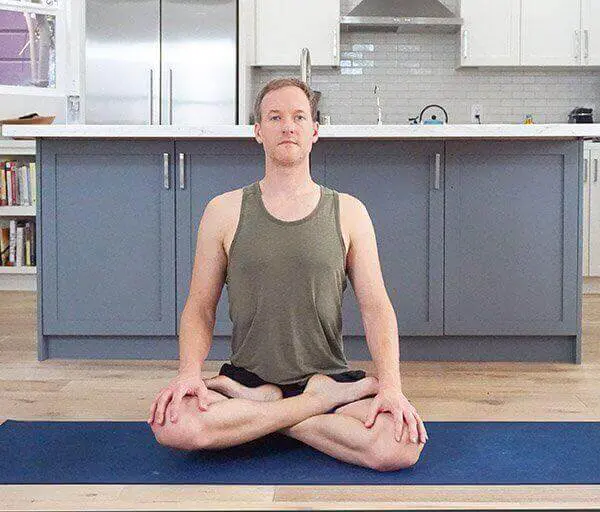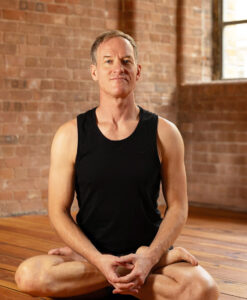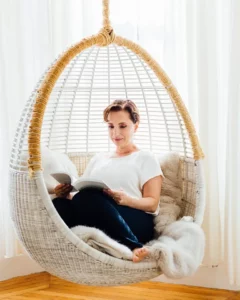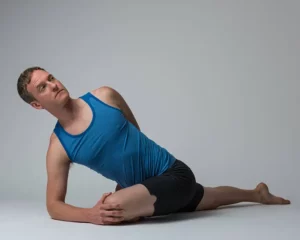QUESTION
I struggle with tight hips and I want to learn Lotus Position (Padmasana). Can you suggest a yoga sequence that will help me open my hips and do Lotus Pose?
ANSWER
There’s a common mistake many of us make when trying to grow a Lotus position (Padmasana yoga pose): We focus too much on stretching the outer hips and forget to open the other muscle groups that make up the hip joint. Don’t get me wrong: the outer hips usually need plenty of help. But, the key to freedom and balance in your hips is working with all the muscle groups that affect the joint, not just your bum. The following sequence will make your hips be happier and healthier — and, if anything is going to help you sit in Lotus position, it’s this practice.
THE ESSENTIAL ANATOMY
There are a couple of things to understand about your hips in order to approach them skillfully in your practice. First, your hip joint (coxal joint) is a ball and socket. This is simple enough, but it has big implications. It means that your hip joint is 360 degrees and has muscles around the entire circumference that produce motion in the joint. In order to create a balanced hip opening sequence you need to address all of these muscle groups. Be sure to target each of the following muscular compartments:
Hip Flexors
These muscles cross over the front of your hip joint and flex the hip.
Adductors
These muscles that line the inside of your upper thigh are usually left out of hip-opening yoga sequences. If these muscles are tight, your knees will remain far away from the floor when you attempt Lotus position. These muscles need to be supple so that the thighs can drop as you fold your legs into Lotus.
Hamstrings
The hamstrings are not a significant factor in Lotus position and they’re not usually thought of as hip muscles. However, they originate on the bottom of your pelvis, cross the back of the hip socket, and run down the back of your leg. The primary joint that they work on is the hip joint. This means that a balanced hip opening sequence will include postures that release this group of muscles.
External Rotators and Gluteus Maximus
Describing the Gluteals and their functions in a few words is tough because this family of three muscles does a lot of different work. Suffice it to say that we tend to think of this region when we think of hip openers. This is the bittersweet part of the body that we stretch when we do Pigeon Pose.
Abductors
Targeting this region is another key step in releasing hip tension and developing Lotus Pose. These muscles run from the outside of the hip, cross the outside of the hip joint and attach to the outside of the thigh. Since this region is harder to get good leverage on than the external rotators, it is often short-changed in hip opening sequences.
THE SEQUENCE
It’s a good idea to warm up for this sequence with 5 to 15 minutes of Sun Salutations.
Modified Anjaneyasana
Focus on rooting down through the top of your back foot and lifting up through your hip points to get the most from this hip flexor opener. Maintain mild abodominal engagement while you do this pose.
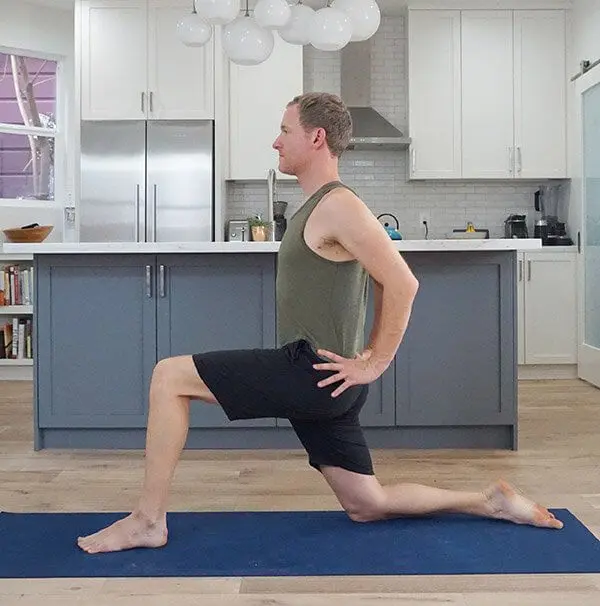
Low Lunge Quad Stretch
This posture continues the hip opening that began in Anjaneyasana and digs deeply into the quadriceps.
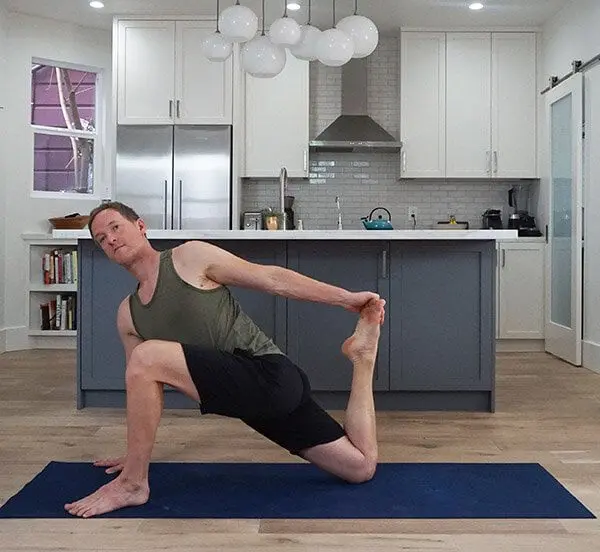
Prasarita Padottanasana
This wide-legged standing forward bend stretches your hamstrings and adductors. It also prepares you for the more intense squat that follows.

Malasana
This is the most effective standing posture for releasing tension in the adductors. Use forearms to press your thighs away from the midline to intensify the stretch.
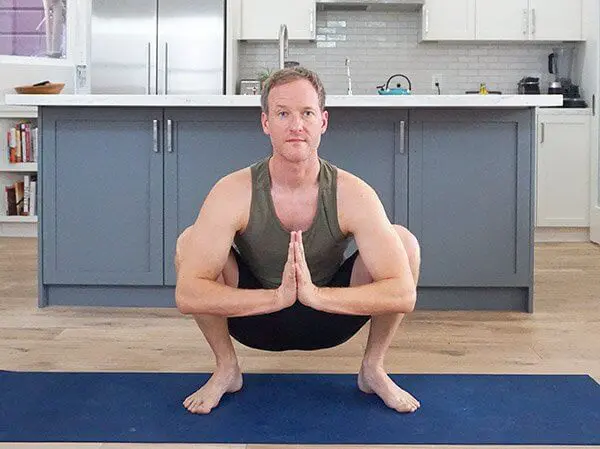
Pigeon Pose with a Twist
This version of Pigeon will help you access part of your adductors and external rotators and lead to more comfort in Lotus position. To be effective, lift and turn your torso toward your front leg. Use your hand to pull strongly against your front knee.
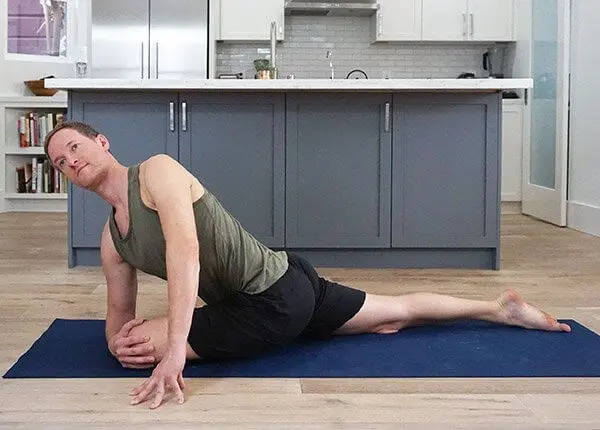
Ankle-to-Knee with a Sidebend
To make this posture most effective, be sure to place your top ankle on your bottom knee and flex your foot.
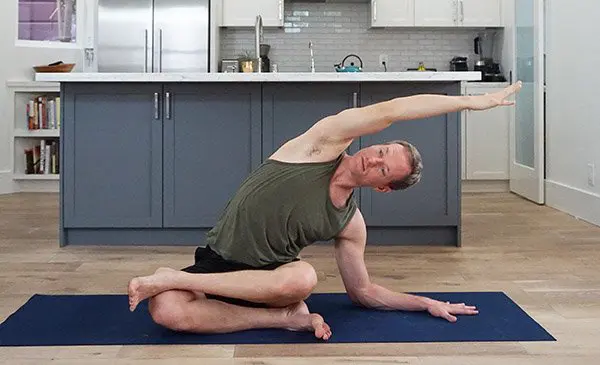
Padmasana (Lotus Position)
I don’t think of Padmasana as a “hip-opener.” I think of Padmasana as a posture to sit in once your hips are open. Unlike the previous postures, Padmasana doesn’t use effective leverage to stretch the muscles of you hip-joint. In fact, the leverage induced through your shin bones in this posture is more likely to stress your knees than your hips if your hips are restricted. With this in mind, here is a step by step approach to folding your legs into Padmasana:
- Start with both legs straight in Staff Pose.
- Bend your right knee deeply and bring your right heel to your sitting bone. Do NOT simply bend the right knee and drag the foot into Half Lotus. Instead, fully flex the right knee first–without externally rotating it.
- Now, that your right knee is fully flexed, externally rotate and abduct your right knee. Then, bring your leg into Half Lotus.
- If your right knee is comfortable in Half Lotus position, proceed to Step 5. If not, take your leg out of lotus and work on any of the above postures that felt the most necessary.
- If your right knee is comfortable in Half Lotus, bring your left leg into Full Lotus.
- Make sure to place your feet high enough on your thighs to prevent your outer-ankles from over-stretching.
- Take a few breaths before repeating on the other side.
